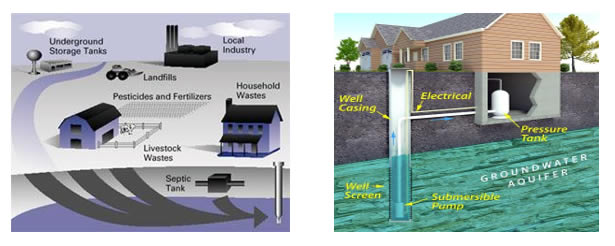It is estimated that more than 13 million households rely on private wells for drinking water in the United States. The EPA does not regulate private wells, nor does it provide recommended criteria or standards for individual wells. EPA offers information regarding the importance of maintaining private wells and guidance on technologies that may be used to treat or remove any contaminants.
Private well owners are responsible for the safety of their water, so it is highly recommended to treat your private well annually to safeguard your family against coliform / ecoli bacteria, fertilizers, and pH levels. You may want to treat more frequently if small children or elderly adults live in your house or if someone in your house is pregnant or nursing as these segments of the population are often more vulnerable to pollutants than others.
In addition, well owners should also determine if the ground water you rely on for household use is under direct influence from surface water. Ground water under the direct influence of surface water is susceptible to contamination from activities on the surface.

Shock chlorination is a disinfection treatment recommended when a domestic drinking water system is contaminated with bacteria. Shock chlorination introduces high levels of chlorine into a well water system. During the disinfection process, water from the system is less than suitable for consumption or extended contact by people or animals. Plan to perform the disinfection process when faucets and toilets will not be in use for at least 8 hours, preferably 12 to 24 hours.
Shock chlorination will be most effective if the chlorine reaches every part of the water system. Most water treatment equipment (such as water heaters, softeners, and pressure tanks), should also be disinfected. Water filters, such as carbon filters, should be changed before shock chlorination.
If water tests still shows biological contamination has reappeared or persisted, try to locate, and remove the source of bacteria. Human and animal wastes are common causes of bacterial contamination, so a nearby septic system could be the source.
If the follow-up water test shows no bacterial contamination, you should still test your water once a year. If there is a change in the taste or smell of your water, or if there are unexplained illnesses in the household, test the water as soon as you notice the change.
Learn more at these valuable sources.
Watch our YouTube Video at (TBD)
Please call Five Star Home Inspections@ 855-500-3744 Ext-1 to schedule or add-on your well chlorination today.